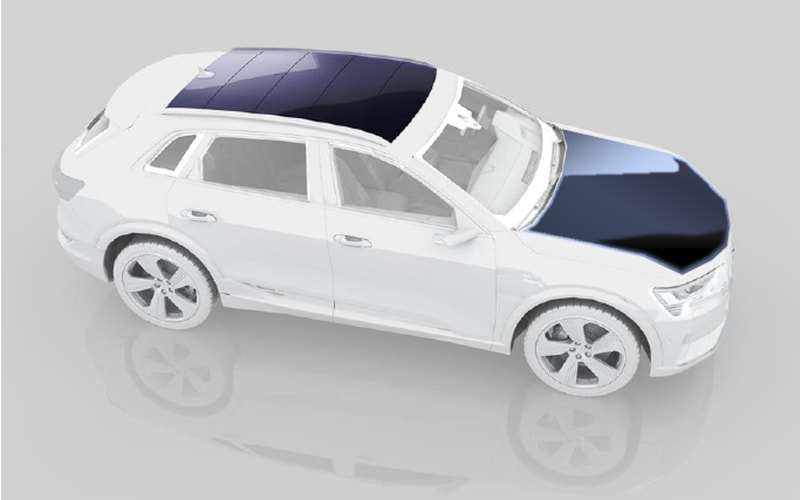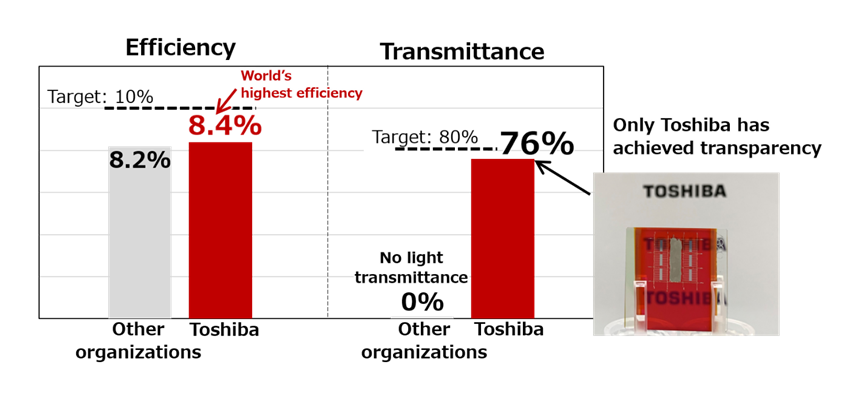

Toshiba: Transmissive Cu2O solar cell: 35km / day without charging
-Contributing to the realization of non-charged EV-
-An era in which EVs can be driven around without being charged even once-
Toshiba:
On December 22, it announced that it had developed a new “transmissive cuprous oxide (Cu2O) solar cell”.
Cu2O solar cell:
Achieved 8.4% of “the world’s highest power generation efficiency by suppressing impurities in the power generation layer”. It was
Range without charging:
When this solar cell is installed in an EV,
The cruising range without charging is
It is estimated that it will reach about 35km per day.
In the future, it will be possible to drive about 40km per day.
Running without charging even once:
The electricity consumed during driving
If you replenish the storage battery with solar power,
It enables long-distance driving.
After purchasing an EV, he says he aims to create a world where he can continue to drive without charging.
Features of Cu2O solar cells:
It is expected to be used for low-cost and highly efficient tandem solar cells.
What is a tandem solar cell?
Two solar cells,
Overlay as bottom cell and top cell,
Both cells generate electricity.
The feature is to increase the power generation efficiency as a whole.
Development of high efficiency top cell:
In 2019, we developed the world’s first transmissive Cu2O solar cell as the top cell.
By stacking existing Si solar cells, etc.,
It was shown that it is possible to develop a top cell with low cost and high efficiency.
Transmissive Cu2O solar cell:
The main material is Cu2O, which is a compound of copper and oxygen.
Compared to III-V semiconductors
Substrates, raw materials, and manufacturing equipment are all inexpensive,
Significant cost reduction can be expected.
Toshiba R & D Center
Nanomaterials Research Institute
It costs 20 million yen to install a GaAs tandem solar cell in an automobile.
It far exceeds the car body price.
Significant cost reduction is required for widespread use.
Transmissive Cu2O solar cells can contribute to this.
Use Si solar cells for bottom cells
Transmissive Cu2O solar cells
It has a structure that absorbs short-wavelength light to generate electricity and transmits long-wavelength light.
By using a Si solar cell that generates electricity with long wavelength light for the bottom cell,
Light of a wide range of wavelengths from short wavelengths to long wavelengths,
Can be converted into energy.
–Car Watch
https://car.watch.impress.co.jp/docs/news/1376121.html
Toshiba’s Transparent Cu2O Tandem Solar Top Cell Achieves 8.4% Efficiency
-A boost to development of no-plug charging EVs and transition to renewable energy-
Corporate Research & Development Center
Toshiba 22 December, 2021
Toshiba Corporation TOKYO
today announced that it has successfully raised the power conversion efficiency (PCE) of its transparent Cu2O solar cell to 8.4%,
the world’s highest level for a reported Cu2O solar cell(*1).
With the cell positioned as the top cell over a 25% PCE silicon cell (Cu2O-Si tandem cell),
Toshiba estimates that an overall PCE of 27.4% can be achieved,
notably above the 26.7% highest PCE reported for any standard silicon cell(*2).
Under the test criteria defined by Japan’s New Energy and Industry Technology Development Organization (NEDO),
Toshiba estimates that
the Cu2O-Si tandem cell will carry an EV 35km without any need of recharging. Looking ahead,Toshiba expects
the new cell to boost development of EVs with no need for plug-in charging, and to advance other mobility applications,such as the High Altitude Platform Station (HAPS), the telecom platform in the stratosphere.
https://www.global.toshiba/ww/technology/corporate/rdc/rd/topics/21/2112-02.html